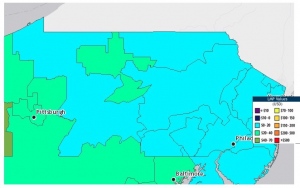As per energy administration bunch REN21, renewable energy will represent almost half (45%) of the worldwide power age by 2040.
This developing number truly deserves a lot of fervour. However as renewable energy use keeps on developing, it faces an approaching test: in a world acclimated to having power on request, renewable energy’s dependence on explicit weather conditions implies that it offers irregular accessibility, which could make a less solid framework after some time Power to Choose .

Does this mean they would be reliable wellsprings of renewable energy later on? A remarkable opposite. We should investigate how energy capacity arrangements can take care of the issue and assist the world with taking full advantage of manageable energy creation – all while setting out significantly more work open doors for experts in the renewables and energy capacity areas.
What is irregular power age?
To put it plainly, discontinuous age is the sporadic accessibility of power throughout a specific period. At the point when weather patterns are not exactly great, the productivity of renewable sources declines, which can make power age conflicting and untrustworthy. Since driving renewable innovations like solar, hydro, wind, and geothermal power are climate subordinate, they can’t give power all year as single sources.
For instance, hydropower, which represents 16% of the worldwide power age, is generally reliant upon water flows, precipitation levels and is affected by the seasons. Wind power depends on wind speed, fixation, and temperature, and solar power relies upon the sun’s energy focus, how much diffuse solar radiation, and the season.
Due to these changes, these sources are considered ‘non-dispatchable’, meaning their result can’t be turned on or off as expected to meet society’s fluctuating power needs.
For what reason is irregular energy an issue?
Today, we’re accustomed to having power on request. The discontinuous idea of renewables can place strain on the dependability of the current lattice framework. Coordinating variable renewable energy sources into the power matrix is trying, as the framework is intended to guarantee power plants produce the perfect proportion of energy, with flawless timing, to satisfy a need.
Since the framework has a restricted capacity limit, the equilibrium between market interest should be painstakingly determined. Consistency and consistency are significant elements in the energy age to stay away from power outages.
For instance, with wind turbines, assuming interest is low however the breeze is blowing at a rapid, the recurrence ascends excessively high. On the other hand, on the off chance that the request is high yet the breeze speed is low, the recurrence falls beneath what’s required. These changes can contrarily affect the matrix and cause harm that can be costly to fix.
What is energy stockpiling and how can it function?
Enter energy capacity. Energy capacity is the catch of energy at a solitary moment for use from here on out. For instance, keeping water down behind a hydroelectric dam is a conventional type of energy stockpiling.
As innovation progresses, energy capacity will play a consistently expanding job in incorporating variable energy sources into the lattice and guaranteeing energy consistency. This additionally implies that an ever-increasing number of occupations will open up in the field after some time.
Look through the pictures underneath to get familiar with the six principle kinds of energy stockpiling utilized today:
How could energy capacity beat irregular power?
Energy capacity can conquer the issue of discontinuous power by acquainting greater adaptability with the framework. Solar, wind, hydro and geothermal energy sources can be integrated really, making a cleaner, low carbon energy blend that can advance all the more dependably.

